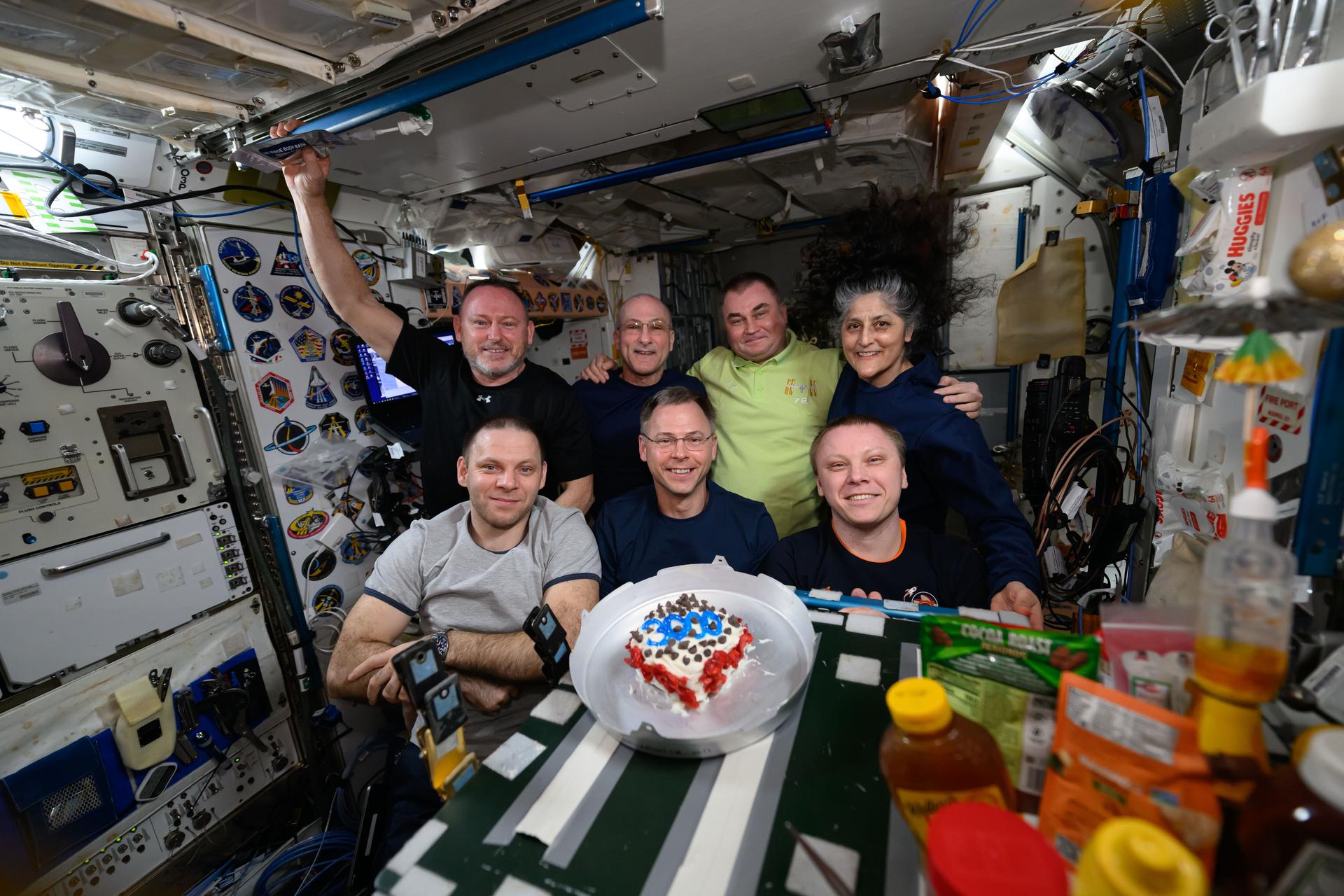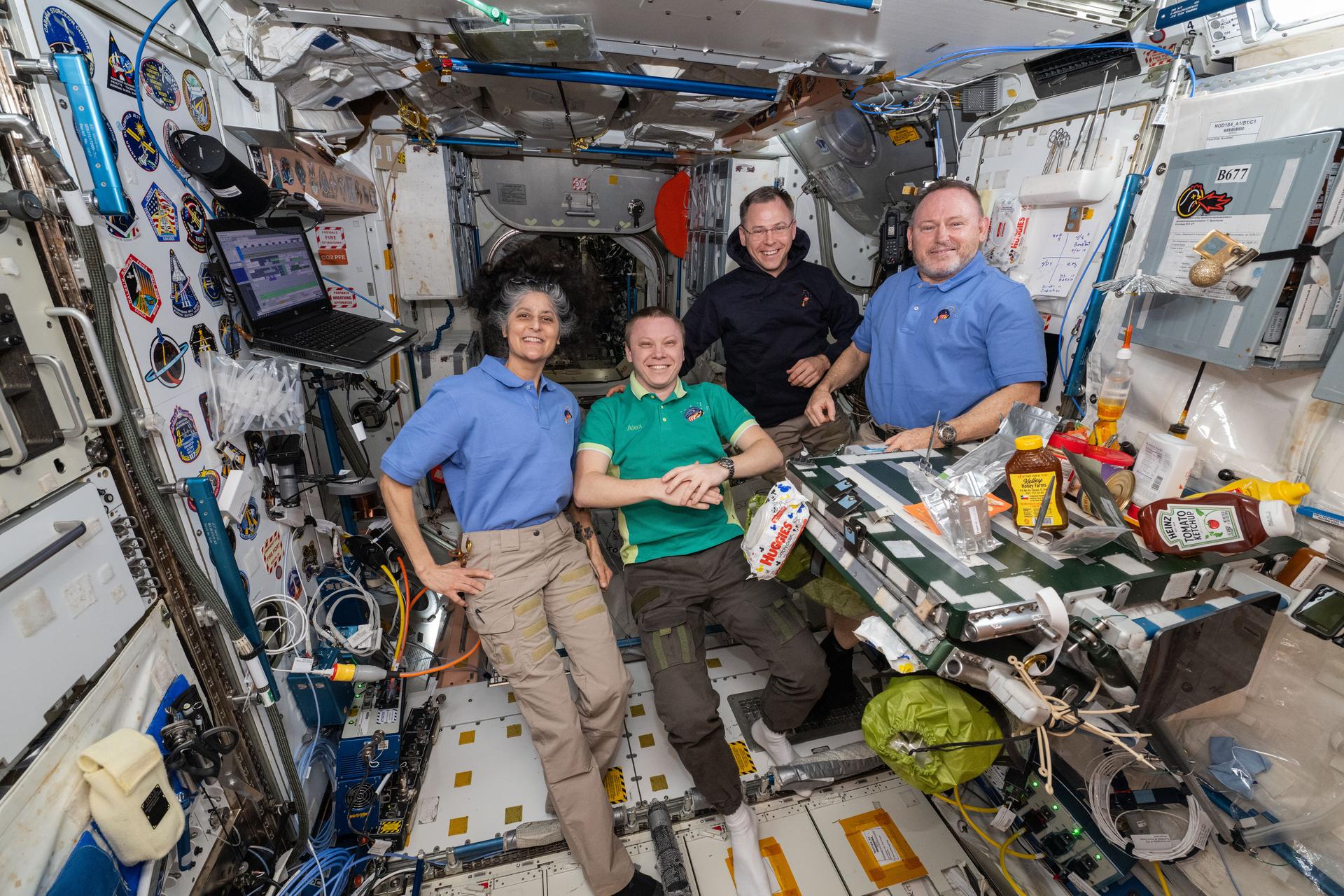Station Crew Keeps Up Advanced Space Research, Waits for Crew-10 Mission
Expedition 72 will wait a couple of more days for the arrival of the SpaceX Crew-10 mission as support personnel work a ground issue at the launchpad. Meanwhile, the International Space Station stayed busy with host a microgravity research exploring robotics, combustion, and adaptation to weightlessness.
Crew-10 is now targeted to launch to the orbital outpost no earlier than 7:03 p.m. EDT on Friday. Engineers at Kennedy Space Center are investigating a hydraulic system issue with a ground support clamp arm for the SpaceX Falcon 9 rocket at the launch pad. For an on-time launch, the Dragon crew spacecraft carrying NASA astronauts Anne McClain and Nichole Ayers, JAXA (Japan Aerospace Exploration Agency) astronaut Takuya Onishi, and Roscosmos cosmonaut Kirill Peskov would dock to the orbital outpost’s Harmony module at 11:30 p.m. on Saturday.
Space science kept the crew aboard the station busy on Thursday as the astronauts and cosmonauts explored a variety of microgravity phenomena benefitting humans living on and off the Earth.
NASA Flight Engineer Butch Wilmore activated an Astrobee robotic free-flyer in the Kibo laboratory module and outfitted the device with tentacle-like grippers. Next, Astrobee demonstrated autonomously detecting and grappling a “capture cube.” Results may enable future space systems to remove space debris and extend the life of satellites.
NASA Flight Engineers Suni Williams and Don Pettit spent their shift servicing gear for two different combustion experiments. Williams opened up the Electrostatic Levitation Furnace and exchanged samples in the research device that safely heats materials to extreme temperatures to observe their thermophysical properties. Pettit swapped samples and installed new hardware inside the Combustion Integrated Rack for an investigation to understand fire growth and material flammability in space to promote spacecraft fire safety.
NASA Flight Engineer Nick Hague spent his day primarily on maintenance tasks inside the orbital outpost. Hague first measured the airflow coming from the ventilation system located in Harmony’s overhead crew quarters. He then spent the rest of the day inspecting and cleaning hatch seals throughout the space station’s U.S. segment.
Roscosmos cosmonauts Aleksandr Gorbunov and Ivan Vagner once again tested the lower body negative pressure suit that may help pull fluids from the upper body and counteract space-caused head and eye pressure. Vagner later studied how a crew member’s vision, balance, and spatial orientation adjusts to microgravity while attached to electrodes and wearing virtual reality goggles. Station Commander Alexey Ovchinin started his day servicing Roscosmos life support gear before continuing to check communications and power components on Orlan spacesuits.
Learn more about station activities by following the space station blog, @space_station and @ISS_Research on X, as well as the ISS Facebook and ISS Instagram accounts.
Get the latest from NASA delivered every week. Subscribe here: https://www.nasa.gov/subscribe
Powered by WPeMatico
Mark A. Garcia








